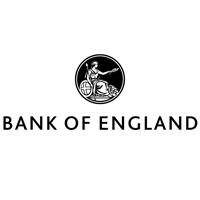The Bank of England’s Monetary Policy Committee (MPC) voted 6-3 to increase interest rates by 25 points to 1.0%. This was not unexpected and it is worth noting that the 3 dissenters actually wanted an even larger increase of 50 basis points. The debate among economists generally is now two-fold; to what extent is raising interest rates effective in countering inflation that is driven largely by external factors and whether any further rate rises are likely.
Inflation is accelerating around the world with higher oil & gas prices at the heart of a situation which is being exacerbated by demand running ahead of supply in a number of areas because of the disruption caused by both the Russia-Ukraine war and continued Covid restrictions in China. The former of these is mainly at the commodity level for products as diverse as wheat and steel, while the issues in China mainly affect goods such as electronics both as products and as components. The MPC admits that it cannot do anything about these global issues.
However, it is clear from the Bank’s minutes that they expect inflation, which is currently around +7% to a peak of about +10% later in the year, probably around the October price cap change for domestic energy. By raising interest rates, the intention is to make borrowing money more expensive and encourage higher saving and lower spending and thereby reducing demand.
The MPC (and most economists) expect inflation to fall sharply in 2023 – note that this does not necessarily mean prices will faff – mainly because to continue at the current level would mean further significant increases in prices. For example, if oil and gas prices generally stay at the current high levels, the impact of the increase will drop out of the inflation calculation a year after they occurred; this will reduce the rate of inflation – note that inflation is a measure of the rate of change in prices, not a measure of the level of prices.
However, they are clearly worried that this relatively temporary spike in inflation driven by external factors could trigger a wage-price spiral in the UK; this is the main reason for raising interest rates and not, on this occasion at least, to have a more direct influence on the prices of commodities globally.
Following the meeting yesterday, the consensus is still forming about further interest rate rises; at least one more increase seems likely given that 3 of the MPC members effectively voted for that this time around. Beyond that, further increases are certainly possible but much will depend on how the UK consumers and economy react over the Summer and, in particular, whether signs of significant wage growth start to emerge.
The update on business conditions by the Bank’s local Agents notes that manufacturing output continues to grow at a modest pace although shortages of materials and components is a factor for the sector. In particular, contacts in the automotive industry noted that they were prioritizing production of vehicles with a higher profit margin to make the most of the limited supply of certain components.
The outlook for demand in manufacturing has become more uncertain with squeezed incomes and rising costs weighing on demand in both domestic and export markets. Despite this, the agents noted that investment intentions remained strong with companies looking to improve It and automation and, for manufacturing in particular, contacts were increasingly considering investing in energy-saving measures.
You can access the Monetary Policy Report on the Bank of England website at https://www.bankofengland.co.uk/monetary-policy-report/2022/may-2022 with the full document available at https://www.bankofengland.co.uk/-/media/boe/files/monetary-policy-report/2022/may/monetary-policy-report-may-2022.pdf (the summary of the Banks’ Agents starts on page 77 of this file).

